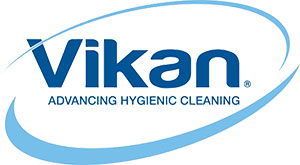Application Notes 2018
- Like
- Digg
- Del
- Tumblr
- VKontakte
- Buffer
- Love This
- Odnoklassniki
- Meneame
- Blogger
- Amazon
- Yahoo Mail
- Gmail
- AOL
- Newsvine
- HackerNews
- Evernote
- MySpace
- Mail.ru
- Viadeo
- Line
- Comments
- Yummly
- SMS
- Viber
- Telegram
- Subscribe
- Skype
- Facebook Messenger
- Kakao
- LiveJournal
- Yammer
- Edgar
- Fintel
- Mix
- Instapaper
- Copy Link
Posted: 20 June 2018 | New Food | No comments yet
This issue includes notes on everything from moisture in bakery to audit compliance through good cleaning-tool selection, pesticide residue on cannabis and spinach and heavy metal contamination in hot sauce and chilli powder.


WELCOME to the Application Notes Supplement of New Food, June 2018. With food safety at the very core of every aspect of the supply chain, it’s no wonder we’ve had to create a whole separate magazine to cover content, such is the breadth of Applications we’ve received from our contributing companies: PerkinElmer, Waters, Shimadzu, Novasina, SPEX CertiPrep, Agilent Technologies, Vikan and TraQtion.
In this edition:
[zl_tabs_reload label=”1″]
[zl_tabs_cell title=”Water Activity in Bakery Products: definitely a ‘Must'” right_icon=”fa-angle-down”]


For some people, it goes without saying that water activity should be measured in bakery products, whereas for others it is something they have never heard of…
[/zl_tabs_cell]
[zl_tabs_cell title=”Heavy Metal Contamination of Hot Sauce and Chilli Powder” right_icon=”fa-angle-down”]


The consumption of botanical products has increased over the past two decades as consumers trend to what are perceived to be natural and high quality botanical products. The primary regions of spice and tea production around the world have often been cited as having less stringent safety and quality standards in regards to consumer products. Products from these regions have been noted to contain a variety of adulterants and contaminants, including wear metals and toxic elements.
[/zl_tabs_cell]
[zl_tabs_cell title=”Optimising audit compliance through good cleaning-tool selection, use and maintenance” right_icon=”fa-angle-down”]


Cleaning is a critical step in the management of food safety and quality. Cleaning tools have been identified as a major source of contamination – 47 per cent of the cleaning tools sampled as part of a major, UK Government funded study were found to be contaminated with Listeria monocytogenes…
[/zl_tabs_cell]
[zl_tabs_cell title=”Determination of Anionic Polar Pesticides in Spinach without Derivatisation by UPLC-MS/MS” right_icon=”fa-angle-down”]


Pesticide residues resulting from the use of plant protection products on crops that are used for food or feed production may pose a risk factor for public health…
[/zl_tabs_cell]
[zl_tabs_cell title=”Mineral oil residues in Food Part 1- dry food (flour, noodles and rice)” right_icon=”fa-angle-down”]


Mineral oil (MO) residues in food raised public concern due to some elevated concentrations up to several thousand milligrams per kilogram food…
[/zl_tabs_cell]
[zl_tabs_cell title=”Analysis of mycotoxins in food matrices using the Agilent Ultivo Triple Quadrupole LC/MS” right_icon=”fa-angle-down”]


Mycotoxins are produced by fungi that can grow on various crops. At certain levels and combinations, mycotoxins can be harmful to humans and livestock through consumption of contaminated crops; therefore, mycotoxin levels are regulated in foods to minimise the risk of ingestion.
[/zl_tabs_cell]
[zl_tabs_cell title=”Analysis of Pesticide Residues in Cannabis Regulated by Oregon State Using LC/MS/MS” right_icon=”fa-angle-down”]


The team from PerkinElmer report on their findings…
[/zl_tabs_cell]
[zl_tabs_cell title=”Increasing Emphasis on Sustainable Supply Chains: Implications for Retailers and Manufacturers” right_icon=”fa-angle-down”]


Retailers are increasingly feeling the effect of sustainability-driven industry disruptions. Already feeling their margins pinched, retailers are among the first to gain or lose a competitive advantage from changing consumer demands for sustainable products, and retailers are aligning with these changing consumer demands…
[/zl_tabs_cell]
[/zl_tabs_reload]
Issue
Related topics
Fats & oils, Mycotoxins, Pesticides, Supply chain, Sustainability, Water









